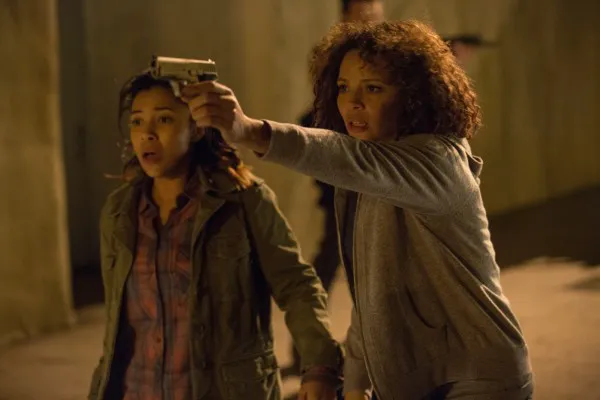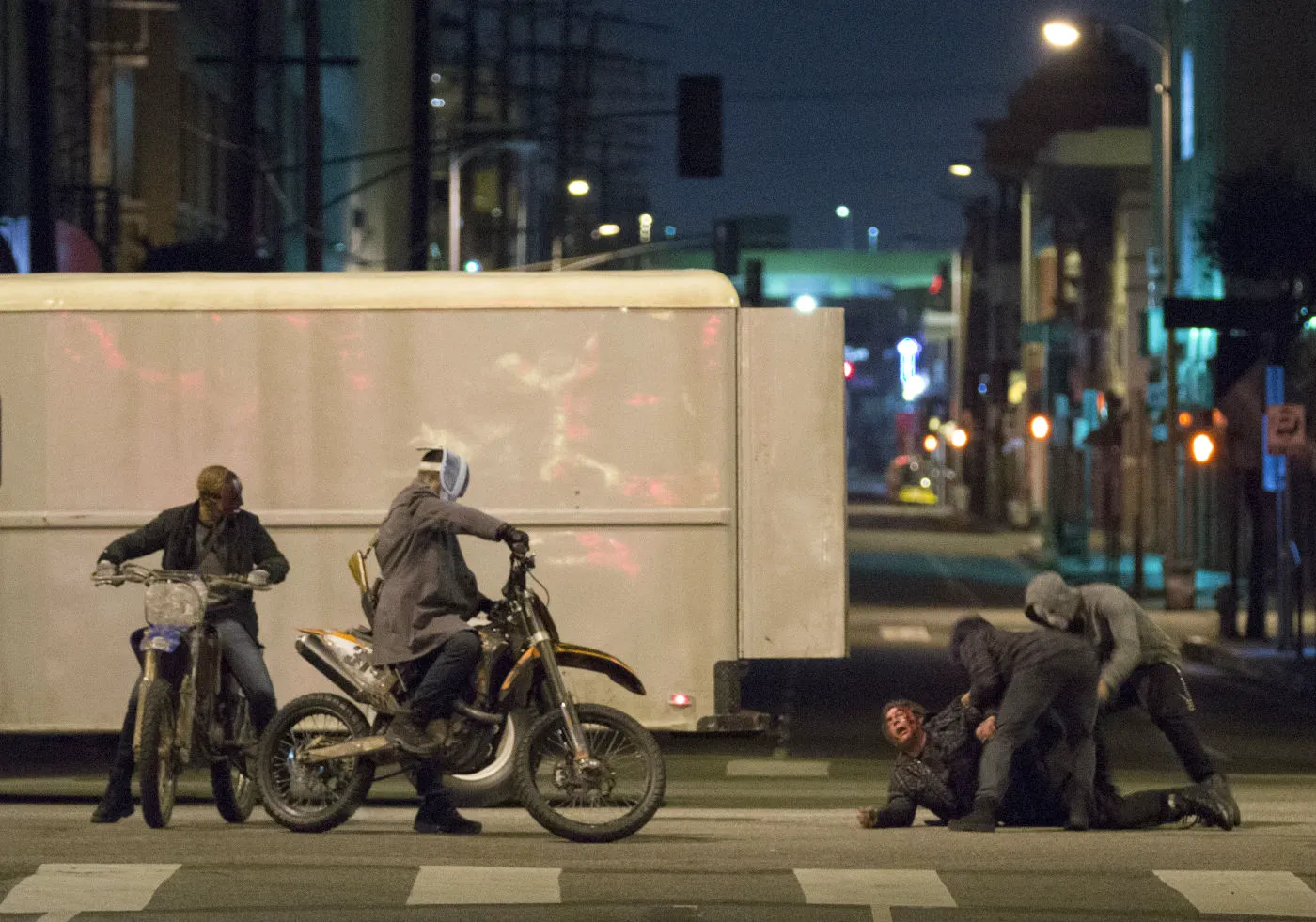“The Purge: Anarchy” - Trading Psychology for Action Spectacle
Trading the psychology, compactness, and tension of a thriller for the frenzy, scale, and scope of an action film, “The Purge: Anarchy” attracts new viewers nostalgic for 90s cinema but loses the original’s sardonic edge and anxiety about the future.
The Purge, a now-traditional American event, involves twelve hours during which laws are suspended and government services offer no assistance. The Purge is meant to be a release of negative energy, an opportunity to vent anger, and a way to unleash inner beasts. That was the plan. But in reality, the night becomes an arena for revenge, a hunting ground, a pretext for cruel games and satisfying the basest needs, where the strong devour the weak and poor. A divorcing couple, a waitress with her teenage daughter, and a mysterious stranger seeking retribution find themselves on the streets engulfed in the Purge.
From Confined Thriller to Open Warfare
Only one actor connects the first and second films, and even he appears in the sequel just to say, “I’m one of those who doesn’t like ‘The Purge’!”
Producer Jason Blum, a master of making money on low-budget thrillers and horrors, was at the origin of “Paranormal Activity,” immersed viewers in “Insidious,” summoned the evil of “Sinister,” and revived “Oculus.” “The Purge,” released in 2012, is a typical product of the “Blumhouse”: a few recognizable actors working for scale (two years prior, it was Ethan Hawke and Lena Headey), a minuscule budget (the first film cost only 3 million), and a lively idea capable of captivating audiences. Box office returns, covering production costs thirty times over, left no room for retreat; a sequel was inevitable. The task was, on one hand, derivative, and on the other, responsible. So, what came of the sequel?

The return of the first film’s writer and director, James DeMonaco, to the sequel seems like a successful decision – no one knows the world he created as thoroughly, no one was more immersed in it. However, it seems the author said all he wanted and could about his attitude towards violence and the future of consumer society two years ago. Entering the second round required DeMonaco to either retell the first story or create something new. The author chose the latter, but commissioned writing is not the best stimulus for creativity.
Almost the entire film was shot on the ordinary streets of Los Angeles because the author wanted viewers to feel the city’s unwelcoming nature. Sets were constructed only for shooting scenes in the hunting club.
Unlike the first compact story, confined within four walls, the second aims for scale: the action spills onto the streets, many secondary characters are involved in the plot, instead of secluded corners – open spaces, instead of a toy car – huge trucks with machine guns, instead of a family holding together – a group of strangers grasping for salvation. The latter seems most questionable. Of course, the instinct for survival makes one hide behind the strong, but the characters too often become victims of banal restlessness. A family is a less unruly group, its cohesion and compactness added more drama to the events. Here, the viewer instinctively begins to guess almost from the first frames in what order the characters will die.
Action Over Substance

Things aren’t all rosy with the characters this time either. The first film was interesting with every character appearing on screen, each had their recognizable and understandable traits, each stood out with their character. The second film only grants Frank Grillo the pleasure of standing out; the remaining characters, both positive and negative, merge into one, like on a swift carousel. But Grillo’s character is a real gift to fans of old-school action films – it’s a composite image of all the heroes of Bruce Willis, Sylvester Stallone, and Jean-Claude Van Damme in one face, “The Expendables 4” in a one-man show. A black armored car, a thirst for revenge, a gloomy outfit, an abundance of weapons – dozens of films of the past that we associate with such images can be named. But the authors are not at all ashamed of this. Does Grillo look like Cobra? Yes, that’s exactly what we intended! And, of course, the superhero constantly performs super feats, who would doubt it. Only the film turns into a standard action movie, while the first film had a second layer.
As a social drama or study of the nature of violence, “The Purge: Anarchy” significantly loses to its predecessor, first simply hiding from any psychological problems behind stilted plot twists, and then maximally narrowing the horizon of questions. Is mercy possible in the modern world? Is violence the only way to stop violence? What is the price of permissiveness? When will the gap between rich and poor lead to similar hunts on the streets of the world? Or has it already led to it? It seems that in the second film, the author either doesn’t want to talk about it or jokes it off. It’s impossible to take seriously the scene of the appearance of opponents of the idea of controlled violence and the Purge, who grind the villains into mince, for all the desire. The second film practically doesn’t engage the brain, offering instead a feast of chases and shootouts. It turns out that if “The Purge” tried to warn the common man against such shooting games, then the sequel pushes towards it.
In cinemas from July 31.